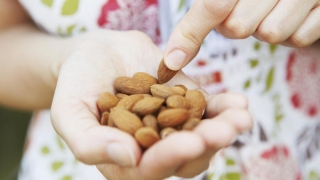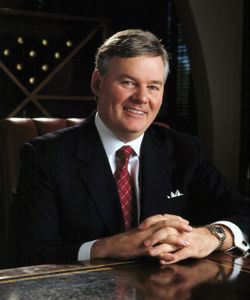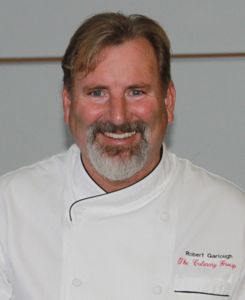Roth® Grand Cru®, a classic alpine-style cheese crafted in Wisconsin, is a perfect partner for pasta. It has a rich, robust flavor and incorporates beautifully into a wide variety of hot applications, especially sauces and mac ‘n’ cheese! Show us how you can make Roth Grand Cru stand out in a creative pasta application (mac ‘n’ cheese, pasta sauce, ravioli/tortellini, casserole, etc.) for a chance to win $2,000 plus one pass/registration and two nights’ lodging to the 2014 National Restaurant Show in Chicago.
DEADLINE FOR ALL ENTRIES IS FEB. 28, 2014
• Recipes must be submitted in preferred format. (See sample)
• Entries must include at least one (1) high-resolution digital photograph of finished dish
• Contest entrants must be currently enrolled in a postsecondary culinary school/program in the 50 United States
• You must include name, email address, telephone number, mailing address, name of culinary school and name of referring culinary instructor with entry
• Contest entries become property of Emmi Roth USA and may be used in marketing/public-relations activities.
• Entries must be the original work of the entrant, may not have won previous awards, may not have been published previously, and must not infringe third-party intellectual property or other rights.
• Entries must be emailed to This email address is being protected from spambots. You need JavaScript enabled to view it.with Roth Grand Cru in subject line.
PRIZES
• Grand Prize Winner receives $2,000 and one pass/registration plus two nights’ lodging in Chicago for the 2014 National Restaurant Association Show. (Note: Winner responsible for own travel expenses to/from Chicago; two nights’ lodging in Chicago must be between May 16 and 20, 2014, during National Restaurant Association Show; winner’s recipe may be featured at Emmi Roth USA’s trade show booth)
• Runner-up receives a Roth Cheese Gift Box valued at $150.00
• Referring instructor of the first- and second-place winners shall receive one (1) FREE registration to a 2014 CAFÉ conference or workshop
• Winning student(s) may be featured in a press release and/or Emmi Roth USA social media
HOW DO YOU WIN
Eligible recipe entries will be evaluated by a panel of Emmi Roth USA judges on creativity, novelty and/or uniqueness of application and flavor quality. Winners will be notified on or before March 21, 2014, via telephone and certified mail.
BONUS
Up to 50 free samples will be provided to first 50 instructor respondents to contest posting. Sample will include up to 12 ounces of Roth Grand Cru Original (two 6-ounce exact-weight cuts). Interested instructors should write to This email address is being protected from spambots. You need JavaScript enabled to view it.with name, title, school/institution, shipping address (no P.O. boxes), telephone number and email address. Samples will be shipped via UPS from Monroe, Wis. Please allow approximately two weeks for delivery of samples from response date. Samples only available for shipment in the 48 contiguous United States of America.


 Andre Burnier, chef instructor and senior core faculty member at New England Culinary Institute, has been chosen to join a select company of his peers in Las Vegas, Nev., this spring.
Andre Burnier, chef instructor and senior core faculty member at New England Culinary Institute, has been chosen to join a select company of his peers in Las Vegas, Nev., this spring.  Dr. Tim Ryan, CMC, president of The Culinary Institute of America (CIA), has been chosen as one of the 50 most powerful people in the restaurant industry. The newly released Nation’s Restaurant News (NRN) Power List recognizes the people who are leading and shaping the food world.
Dr. Tim Ryan, CMC, president of The Culinary Institute of America (CIA), has been chosen as one of the 50 most powerful people in the restaurant industry. The newly released Nation’s Restaurant News (NRN) Power List recognizes the people who are leading and shaping the food world. No other ingredient comes close to mashed potatoes in terms of versatility, ease of use and sheer crowd-pleasing potential. The U.S. Potato Board’s international team has developed a 14-page, full-color brochure—U.S. Mashed Potatoes, Endless Creativity, Instant Success—which shows the amazing variety of menu items that chefs from around the globe are making with standard potato flakes, standard potato granules and mashed-potato mixes.
No other ingredient comes close to mashed potatoes in terms of versatility, ease of use and sheer crowd-pleasing potential. The U.S. Potato Board’s international team has developed a 14-page, full-color brochure—U.S. Mashed Potatoes, Endless Creativity, Instant Success—which shows the amazing variety of menu items that chefs from around the globe are making with standard potato flakes, standard potato granules and mashed-potato mixes. A star of such televised cook-offs as “Top Chef” and “Food Network Challenge” alerts educators that Women Chefs & Restaurateurs will hold its annual conference in Chicago during National Women’s History Month.
A star of such televised cook-offs as “Top Chef” and “Food Network Challenge” alerts educators that Women Chefs & Restaurateurs will hold its annual conference in Chicago during National Women’s History Month. Healthy whole grains are hot all over the menu. But what diner wants to consume a simple bowl of them? Chef Renee Zonka explains how to teach students to look beyond oatmeal at breakfast to showcase whole grains in dish development in a whole new light.
Healthy whole grains are hot all over the menu. But what diner wants to consume a simple bowl of them? Chef Renee Zonka explains how to teach students to look beyond oatmeal at breakfast to showcase whole grains in dish development in a whole new light. Yellow, red, white and sweet onions all bear different qualities and thus require different approaches to maximize their exquisite flavor and texture contributions to a dish.
Yellow, red, white and sweet onions all bear different qualities and thus require different approaches to maximize their exquisite flavor and texture contributions to a dish. Robert Garlough’s goal is for graduates to become a source of intense pride to the Middle-Eastern kingdom’s foodservice and business communities and the college’s programs to be respected worldwide.
Robert Garlough’s goal is for graduates to become a source of intense pride to the Middle-Eastern kingdom’s foodservice and business communities and the college’s programs to be respected worldwide. For the first time, researchers and campus visitors can now schedule appointments to view.
For the first time, researchers and campus visitors can now schedule appointments to view.